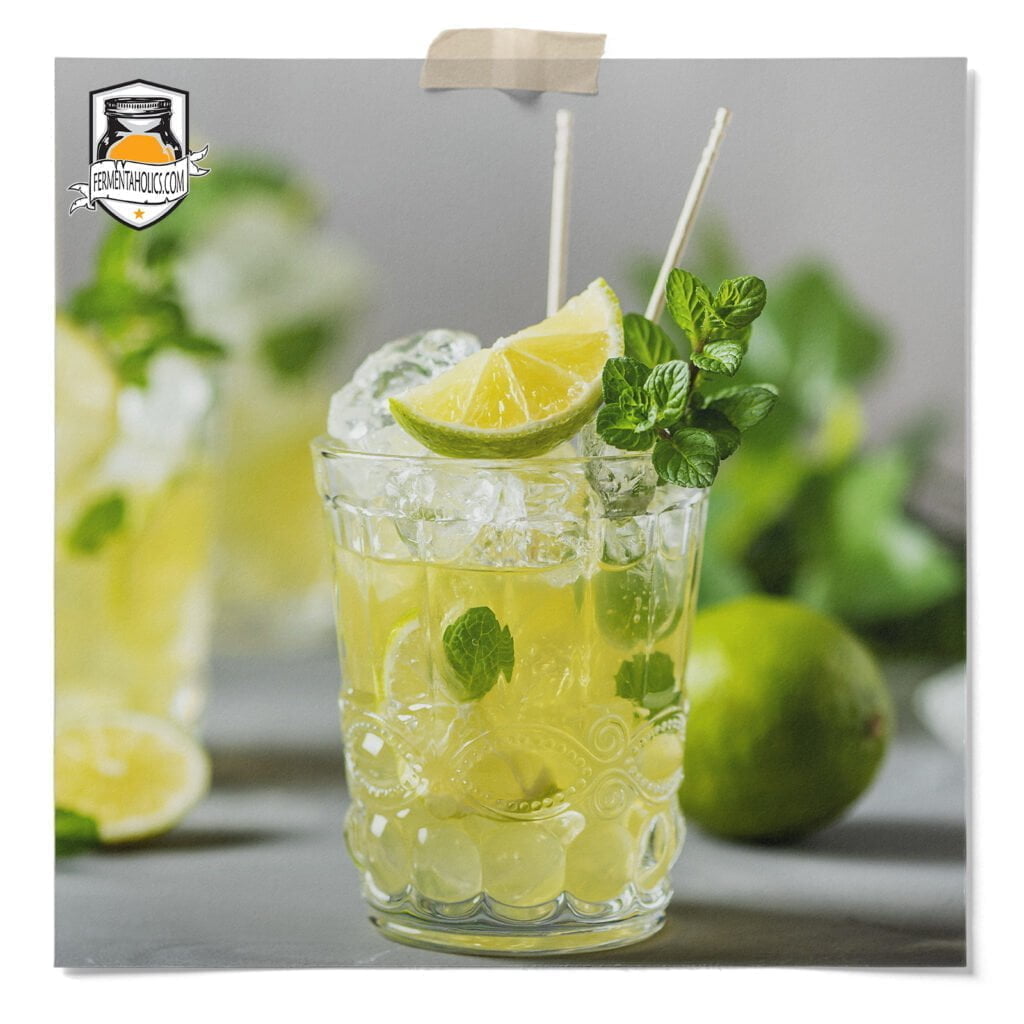
Welp, it’s hot here in Florida again, and probably for the rest of the year. One great thing about it being hot out: Icy cold refreshments. Bye-bye winter, nice knowing you. This ginger mojito kombucha is definitely exciting. On a hot day, this has to be one of the most refreshing ways to cool yourself down. This recipe takes advantage of my FAVORITE kombucha flavoring secret: candied ginger. A lot of brewers struggle to get ginger to work for them in the flavoring process. Some find they get a weird astringent musky sort of off-flavor that just doesn’t live up to their expectations. Enter candied ginger, so simple, and yields such great results.
It’s important to note that making homemade kombucha is almost always a two-step fermentation process. Brewing kombucha is only a one-step process for those who prefer an unflavored flat kombucha. Otherwise, the steps consist of a primary fermentation and a secondary fermentation.
The primary fermentation is the first step of the kombucha brewing process. This is where your SCOBY transforms regular sweet tea into the tart and slightly sweet kombucha we love. At the end of this stage, you will have finished kombucha, but it will be flat and unflavored. Have you skipped this step? Then check out our guide on making kombucha at home or our guide on making jun kombucha at home. Traditional kombucha is going to yield a bolder brew, while jun kombucha is milder and a bit more tart.
The secondary fermentation is the step where you bottle, carbonate, and flavor your kombucha by the addition of sugar and flavors. This step is essentially adding a bit of sugar/flavor to each airtight bottle and letting it ferment a little longer, allowing the yeast to carbonate the beverage in an airtight environment naturally. How exactly does this happen? See our post on kombucha secondary fermentation here.
💡Since this recipe is for the secondary fermentation, to make this recipe, you’ll need to have kombucha that has finished the primary fermentation and is ready to bottle.
This recipe makes one 16-fluid-ounce bottle. A 1-gallon batch of kombucha will make seven 16-ounce bottles, so for one gallon, you will need to multiply the ingredients by 7. Before beginning this recipe, you will need to:
16 FL Oz Bottles
2
minutes2-10 Days
This Ginger Mojito Kombucha is for one 16 fluid-ounce bottle. For a gallon batch, make seven bottles. To scale this recipe to a gallon batch, multiply the ingredients by seven or toggle the serving size up to seven above. Before bottling your kombucha, remove the SCOBY pellicle along with 12-16 ounces of kombucha starter tea from your brew, and reserve for your next batch.
1 TBSP Candied Ginger
1 TBSP Fresh Lime Juice
1 Mint Sprig (3-5 Large Leaves)
6-7 16 OZ Flip Top Bottles
1 Funnel
1 Small Strainer (Optional)
1 Small Pot
Plop the little pieces of candied ginger into the bottle, along with the mint leaves. Roll the mint leaves in your hand a few times before adding them-this releases their oils and the flavor infuses easily.
Add lime juice using a funnel.
Fill each bottle with kombucha, leaving about an inch of headspace.
Be sure to leave yourself enough kombucha to use as your starter for the next batch, about 2 cups per gallon.
Tightly place caps on each bottle.
Keep bottles at room temperature for 2-10 days; it will carbonate faster at higher temperatures and slower when cold.
Once per day, you’ll want to “burp” the bottles by removing the cap to allow built-up pressure to escape and place the cap back on. As soon as you put the cap back on, the carbonation will begin to build back up, so no worries about it getting flat. Try not to skip this or you will have kombucha all over your face and your kitchen when you do go to open it.
